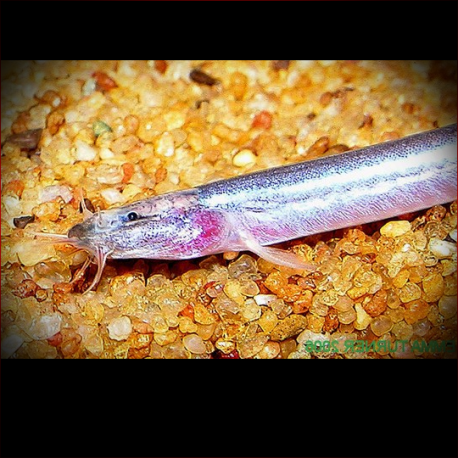More info
Datasheet
| Minimum Tank Size | 60 litres / 15.85 US gallons |
| Maximum Size | 9.0cm / 3.54inches |
| Temperature | 21°C / 69.80°F - 26°C / 78.80°F |
| Hardness | 0.00dgH / 0ppm - 8.01dgH / 143ppm |
| pH | 3.5-7.0 |
General Description
Pangio Doriae, commonly known as eel loach, is a peaceful species belonging to the family Cobitidae. They have a long, slender body shape with a relatively high number of vertebrae, distinct nasal barbels, and a pair of pelvic fins. These loaches are micropredators, sifting through substrate to extract insect larvae, small crustaceans, and organic detritus.
Aquarium Setup
For Pangio Doriae, a tank of at least 60 litres is recommended, with a soft, sandy substrate to accommodate their digging behavior. Driftwood roots and branches can be added for structure, creating shady spots, and dried leaf litter can provide cover. Dim lighting and aquatic plants like Microsorum and Cryptocoryne are suitable. Gentle filtration with minimal surface agitation is ideal to prevent stress, and cover the tank to prevent jumping.
Behaviour
Pangio Doriae are peaceful with their own species and tankmates, typically grouping together in nooks or caves when at rest. They are known to prey on eggs or fry, though reports of them harming other fishes are rare. Suitable tankmates include small, peaceful species like Boraras and Sundadanio, while some sand-dwelling loaches from the Nemacheilidae family can also be compatible with proper research.
Feeding and Diet
In their natural habitat, Pangio Doriae primarily feed on insect larvae, small crustaceans, and organic detritus. In captivity, they accept sinking dried foods but also benefit from live and frozen options like Daphnia, Artemia, and bloodworm. Providing a varied diet ensures their nutritional needs are met.
Reproduction & Dimorphism
Details about the reproduction of Pangio Doriae are unrecorded. Sexual dimorphism is evident in mature males, with thicker and branched first pectoral-fin rays, along with longer and upturned pectoral fins compared to females. Adult females are generally larger and heavier-bodied than males.
Habitat and Distribution
Pangio Doriae is native to the Malaysian state of Sarawak in Borneo and Peninsular Malaysia. They are commonly found in shallow, slow-moving sections of forest streams, swamps, oxbows, and backwaters. These habitats are characterized by low mineral content, acidic pH levels, and may contain tannin-stained water. Within their distribution range, they coexist with various fish species in habitats with ample leaf litter for shelter.

